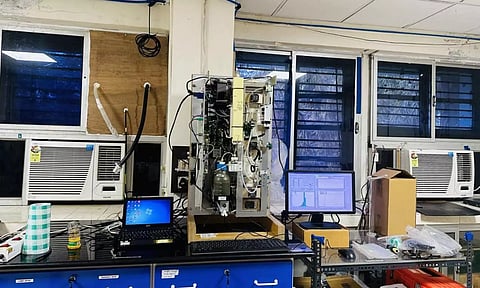

CHENNAI: Indian Institute of Technology Madras (IIT-M) study recently found that the conversion of gaseous sulphur dioxide (SO2) emissions from power plants into particulate matter contributes to an elevated mass load of aerosols rich in sulphates with high cloud-forming potential within the atmosphere.
Further, the study reveals that its outcomes imply that the existing strategies aimed at reducing PM 2.5 levels from traffic and industries in India's polluted coastal clusters need thorough revaluation.
“IIT-Madras-led international research team studied how atmospheric conversion of gaseous emissions from power plants into particulate matter (PM) results in particles that are rich in sulphate and consequently have high cloud forming potential compared to natural counterparts. This study may provide important scientific insights for framing the policies related to controlling the PM2.5. Demonstrating the true multidisciplinary nature of climate change research, IIT Madras led this global collaborative effort where a group of 27 researchers from 17 distinct institutions across eight countries participated,” said a release from IIT-Madras.
“The researchers, led by professor Sachin S Gunthe from the Centre for Atmospheric and Climate Sciences at IIT Madras, delved into the impact of emissions from the Neyveli coal-fired power plant located about 200 km south of Chennai, Tamil Nadu, on aerosol growth and cloud-forming properties during the COVID-19-induced lockdown. This investigation, conducted amidst the COVID-19 lockdown in India, imparts valuable insights into the consequences of reduced human-related emissions on aerosol traits and cloud formation, thereby advancing our comprehension of the implications of coal-fired power plant emissions in the context of climate change,” it added.
Highlighting the important outcomes of this study, professor Sachin S Gunthe said that this study provides a rare opportunity to examine the sensitivity of cloud-forming aerosol particles to new particle formation and growth due to SO2 emissions from a coal-fired power plant under relatively cleaner conditions.
“These findings have important implications for assessing the climate impacts of anthropogenic aerosols and highlight the need for comprehensive emission control measures. Due to the intricate origins, diverse types, and fluctuations in aerosol characteristics, coupled with a limited scientific understanding of how these ever-changing properties have influenced cloud formation since before industrialization, researchers struggle to precisely forecast the exact temperature rise by the close of this century,” he added.
The study revealed a remarkable event where long-range transport of sulphur dioxide (SO2) gas emitted from the Neyveli power plant resulted in new particle formation (NPF) in Chennai, generating particles generally known as ‘secondary aerosols.’ The findings demonstrated that the SO2 plume from the power plant resulted in high particulate sulphate concentrations and subsequent particle growth.
These sulphate-rich particles rapidly grew into the size relevant and required for the cloud formation exhibiting a high ability to uptake water, thus enhancing the cloud-forming potential of the aerosol particles, which is nominally not the case during business-as-usual scenarios.